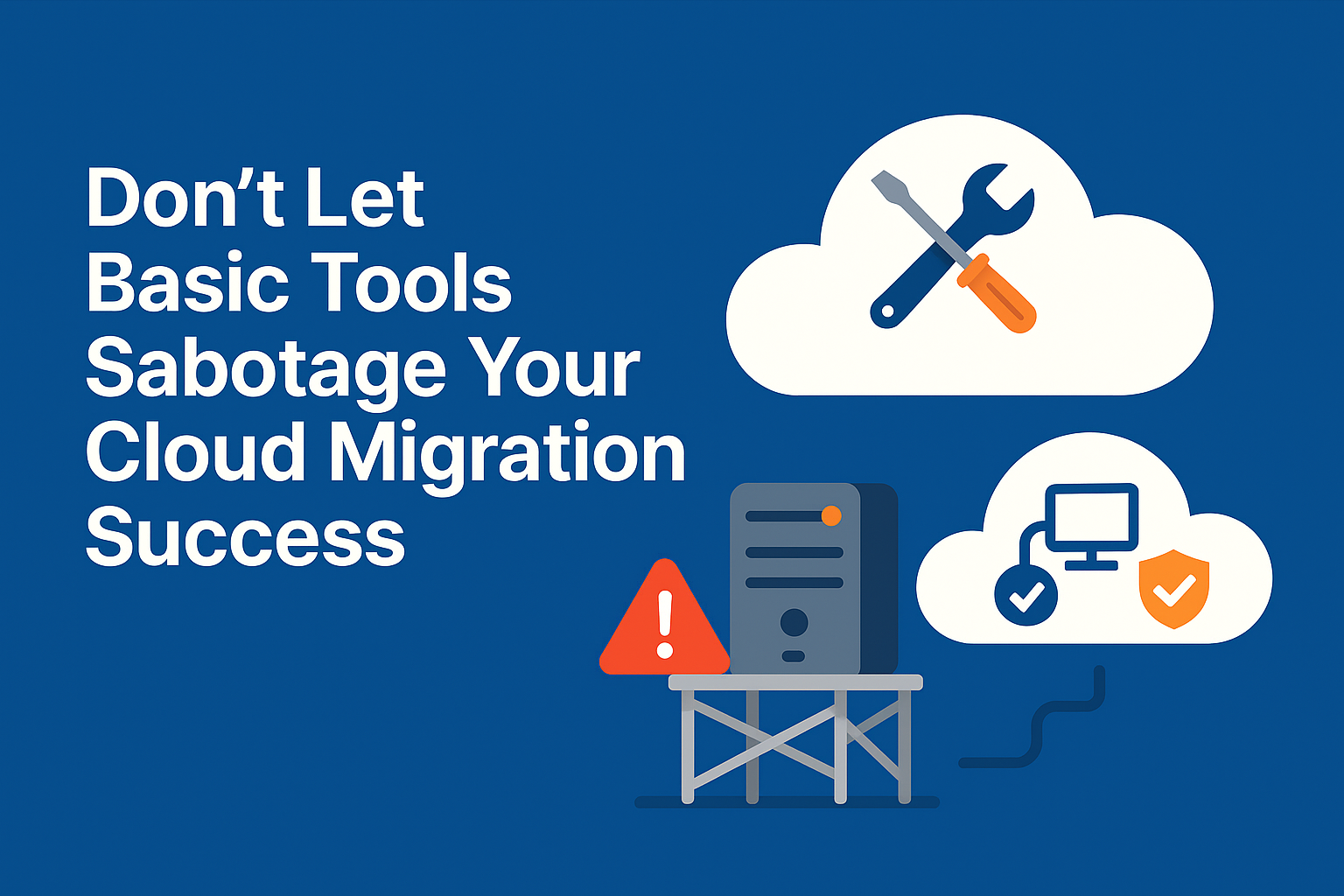Chances are that the hardware you purchased around 2020 is now approaching end-of-life. As your support contracts expire, you’re likely re-evaluating options for its replacement. When considering cloud, resist the urge to take the simplest path – don’t fall into the trap of thinking a basic lift-and-shift guided by tools like Azure Migrate, Dr Migrate nor AWS’s Migration Evaluator is a complete strategy. While these tools provide a rudimentary consumption plan and a basic bill of materials, they reveal only a fraction of what a successful migration truly requires.
To truly conquer your cloud migration and move beyond a superficial assessment, you need to ditch the half-arsed approach and build a comprehensive plan that delves far beyond a basic Bill of Materials. Here’s what a complete cloud migration plan looks like mapped out with Azure in mind:
Your Apps Don’t Just Exist – They Need a Destination Strategy
Moving to Azure isn’t just about the servers; it’s about building a fully functional and secure cloud environment. You need to plan for the foundational services that will make it all work:
- Design Backup & DR First, Not Last: A comprehensive plan puts data protection and business continuity front and centre. Choose the right Azure Backup and Site Recovery services with recovery objectives planned upfront.
- Architect Networking That Works (and Scales): Carefully plan your virtual networks, connectivity to your existing infrastructure, and internet access. Don’t underestimate the importance of a well-planned network.
- Make Security a Cornerstone: Secure your Azure environment from the get-go. Implement Defender for Cloud, Firewalls, Network Security Groups, and potentially other security tools as part of your foundation.
The 6 R’s Aren’t Just Acronyms – Use Them to Define Your Future State
That initial Azure pricing often overlooks the smartest ways to manage your cloud expenditure. Use the 6 R’s of Cloud Migration to think critically about how you’ll really be using Azure and optimise costs accordingly:
- Rehost (Lift and Shift): Best off avoided, although sometimes a necessity for speed. It often leaves cost savings on the table. Understand when it’s the right move, and when it’s a temporary stepping stone.
- Replatform (Lift-Upgrade-Shift): When you’re moving older apps, don’t just shift them as-is. Take the opportunity to upgrade the foundation – operating systems, databases – to reduce the tech debt they hold. And if you can, consider using Azure’s own services (i.e. SQL Managed Instance) for an even bigger win.
- Repurchase: Why maintain an on-prem behemoth when a sleek SaaS solution can do the job for less?
- Re-architect: This is where true cloud optimisation happens. Modernising your architecture significantly boosts long-term savings and performance.
- Retire: The easiest way to save money? Get rid of what you don’t need! Identify and decommission those old servers and applications.
- Retain: Be pragmatic. Sometimes you should keep workloads on-prem. Acknowledge these exceptions in your plan.
Planning for Azure: The Multi-Year View You Can’t Afford to Skip
Don’t think that just because your old hardware is dying or your hosting contract is ending, your initial Azure migration will magically modernise everything. Achieving true modernisation takes ongoing effort after you’ve moved. Plan for those continuous improvements to truly realise the benefits you outlined in your business case. A basic Bill of Materials will never factor in this crucial evolution and the persistent costs of running a fully functional cloud environment. That’s why you need a detailed, multi-year plan to truly understand the cost of your Azure cloud:
- Break Down Services Granularly: Dive deep into the costs of all the Azure services you’ll use – networking, databases, serverless, analytics, the whole shebang.
- Make Usage Projections That Make Sense: Forget generic estimates. Your forecast needs to reflect your actual application usage patterns and future optimisations.
- Proactively Control Costs: Your plan should bake in cost optimization strategies from day one – reserved instances, hybrid use benefits and a clear strategy for using Azure Cost Management tools.
- Budget and Govern Effectively: Implement robust budgeting and governance to keep your Azure spending in check and prevent runaway costs.
Don’t settle for a rough estimate – demand the full picture. Your successful Azure journey depends on it.
Planning a cloud migration?
Reach out to the experts at Codify for a no-obligation consultation—we’ll help you map the path to a modern, well-governed Azure environment.
👉 Want more detail? Check out our blog on The Five Stages of Cloud Migration Planning – Building a Cloud Migration Business Case – Codify

